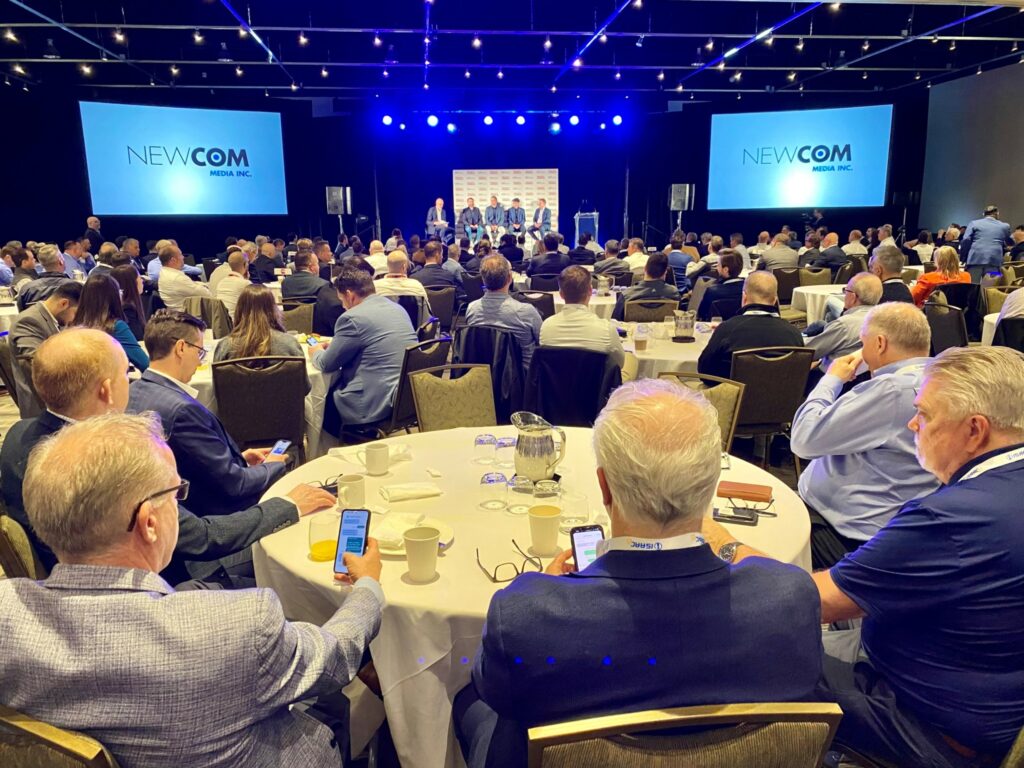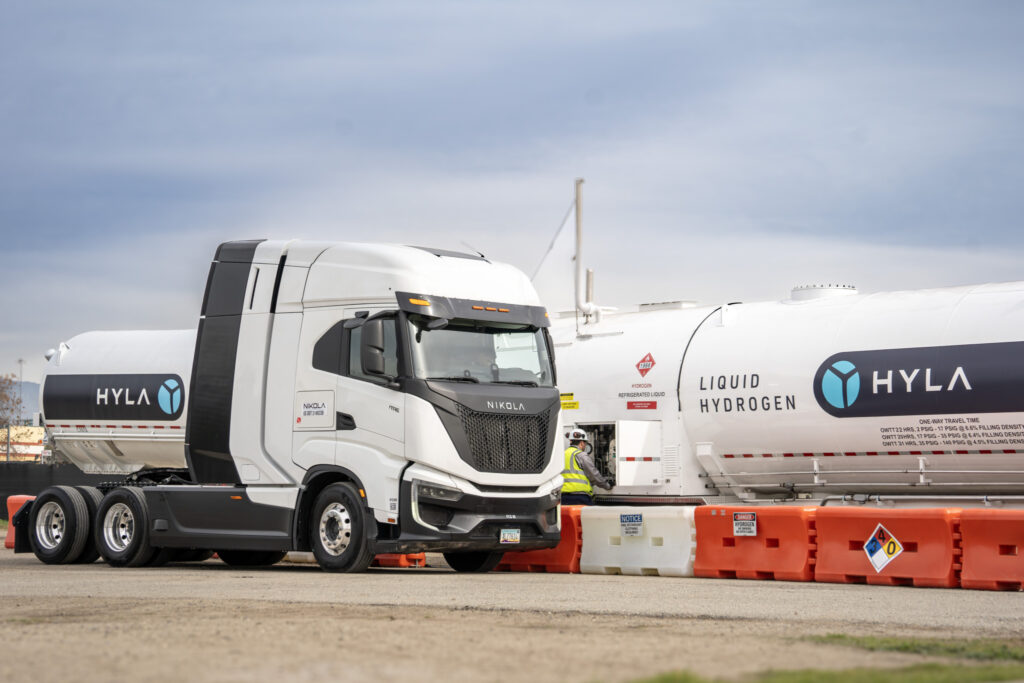Nikola sees great potential for hydrogen fuel-cell-electric trucks in Canada
Canada has emerged as one of the most promising markets for hydrogen-fueled Class 8 trucks, representatives from Nikola said during the VIP breakfast at Truck World.
“I’ve been pushing Canada at Nikola for quite some time now,” said Jorg Wimbert, head of Canada for the zero emissions truck maker. “To all of us, Canada is a no-brainer. The citizens, the government, the markets – everybody wants to move to greener technology.”

Nikola has also found a strong partner in the Alberta Motor Transport Association (AMTA), which has purchased two hydrogen-fueled trucks to help its member fleets gain exposure to the technology. The first Hyla-branded hydrogen fueling station was recently opened near Edmonton. The company will soon be opening another fueling station in Ontario with ITD, its exclusive Canadian distributor. The modular stations can fuel between 20 and 40 trucks.
“ITD knows trucks and knows the Canadian market,” Wimbert said of that partnership. Nikola’s model is to install modular fueling stations where needed, eventually replacing them with permanent fueling stations. Wimbert said deploying the fueling infrastructure in Canada is relatively simple because of its one main highway connecting east to west.
Christian Appel, global head, product and programs, said Nikola has a two-pronged approach to the market, selling both a battery-electric and hydrogen fuel-cell-electric vehicle.
“Both trucks share a common powertrain system,” he said. “The difference is in the energy storage.”
The fuel cell truck is better suited to longer hauls, heavier weights and applications where fueling time is important. “We have less than 20 minutes refueling time for a full refuel,” Appel said.
“We have to make sure the use case is a match and the business case is a match,” added Jason Roycht, head of FCEV (fuel-cell-electric vehicle) market development.

The FCEV truck has a range of 800 km, while the battery-electric truck is limited to about 400 km.
How the hydrogen is produced for the FCEV truck is also a consideration. The truck itself doesn’t care – a hydrogen molecule is a hydrogen molecule – but green hydrogen involves no emissions during production. Today, 76% of the hydrogen produced is grey hydrogen, mostly produced using natural gas. But Wimbert sees an opportunity for green hydrogen production in Ontario using small modular reactors.
“We are colorblind but it takes the full color spectrum to fuel the fleets of the future,” Wimbert said of the various forms of hydrogen.
Ryan Clayton, global head of sales, said it hasn’t been easy competing against the incumbent OEMs as a startup, but there are advantages.
“We are proud of being pioneers, but pioneers get a lot of bloody noses along the way,” he said. “The advantage is we can pivot quick, move quick, go to market quick.”
One of the company’s proudest moments was running a FCEV Nikola between Calgary and Edmonton and back without refueling and with hydrogen left in the tank. Bison Transport and one of its drivers conducted the run.
The truck was only three-quarters full, the day was cold, and there was some trepidation.
“We did some simulations, and discussed whether we can go for it or wait until the fuel arrived,” recalled Appel. “We said let’s just go for it.”
One of the interesting benefits of a FCEV is that the hydrogen creates enough heat to keep the cab warm. It is also less impacted by cold weather than a battery-electric truck.
The cabover design is also driver friendly and comfortable, added Appel. “You’re sitting on top of the fuel cell but the fuel cell is quiet and doesn’t produce any unpleasant fumes [or vibration],” he said.
Another reason Nikola is bullish on the Canadian market is the government incentives. Wimbert noted a federal program offers $200,000 towards the truck while provincial incentives in B.C. and Quebec can add up to another $150,000.
Asked about service points, Clayton pointed out that more than 90% of any issues that arise with the truck can be addressed remotely. But the company is adopting a traditional dealer network to add more service locations and also provides extensive training with a fleet’s own technicians.
Have your say
This is a moderated forum. Comments will no longer be published unless they are accompanied by a first and last name and a verifiable email address. (Today's Trucking will not publish or share the email address.) Profane language and content deemed to be libelous, racist, or threatening in nature will not be published under any circumstances.
I drove the Hydrogen truck at TruckWorld 2024 in Mississauga. It is the first for me. I really loved it. Over 11,000 lbs/foot Torque. That is right-over Eleven Thousand lbs/ ft Torque and the Horses were average 525 up to 575 hp peak. The Torque is what we are after. I would consider buying or leasing one for one of my overnight FedEx routes with around 600 km round trip.The technology will eventually improve and we will get better range. Government incentives will certainly help. When I started in 1997 as a driver , I would have never ever imagined this would happen…